By Charlotte Pyle
Chair, CIPWG Native Alternatives Subcommittee
August 2023
Photos by David Silsbee
Butterflies and honeybees frequently come to mind as pollinators, but when you look closely at the insects on your flowers, you will see a whole world beyond those familiar insects. For example, bumblebees, mason bees, many moths, and some wasps, beetles, and flies act as pollinators.
Milkweeds are known as host plants for Monarch Butterflies, but they also are an excellent nectar source used by a diversity of insects.
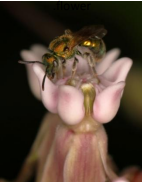
A tiny Golden Green Sweat Bee on Common Milkweed
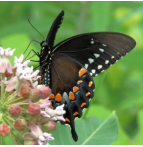
Spicebush Swallowtail nectaring on Common Milkweed (Asclepias syriaca), a plant too aggressive for small gardens.
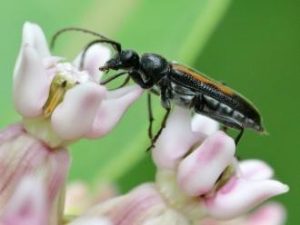
Strangalepta abbreviata, a species of Flower Longhorn Beetle, drinking nectar from Common Milkweed.
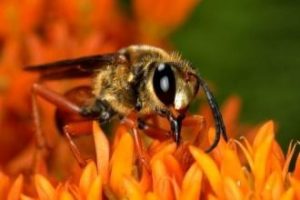
Great Golden Digger Wasp on Butterfly Milkweed (Asclepias tuberosa), a plant whose smaller size is suited to small gardens.
Habitat for pollinator insects also includes the "host" plants whose leaves provide food for the insects' young (called "larvae," or, in the case of butterflies and moths, "caterpillars").
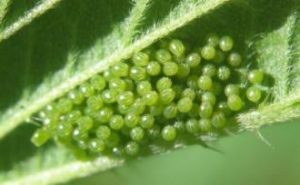
Eggs of Milbert's Tortoiseshell Butterfly on its caterpillar host, the Nettle genus (Urtica).
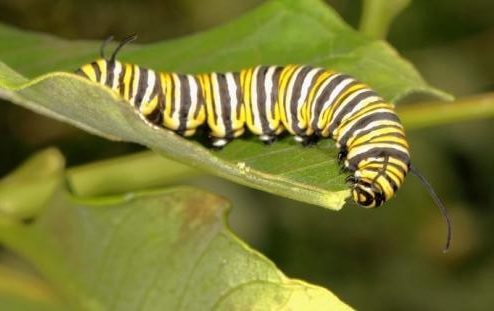
Monarch caterpillar host plants are Milkweeds (species of genus Asclepias).
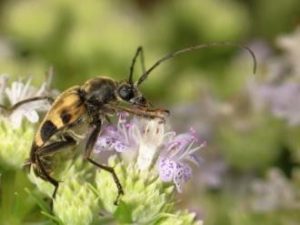
Judolia cordifera (a species of Flower Longhorn Beetle) on Narrow-leaved Mountain-mint (Pycnanthemum tenuifolium).
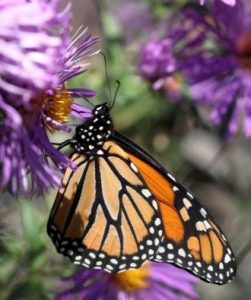
Adult Monarch butterfly drinking nectar of New England Aster (Aster novae-angliae). Adult butterflies take nectar from many species, but are very restricted in which host plants they will lay eggs upon.
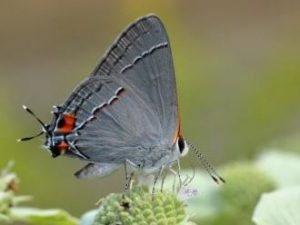
Gray Hairstreak on Broad- leaved Mountain-mint (Pycnanthemum muticum).
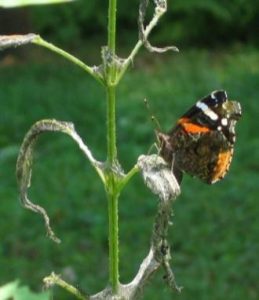
The Nettle family (Urticaceae) serves as host for Red Admiral caterpillars (adult pictured here). Note damage to these Nettle leaves left by Milbert's Tortoiseshell caterpillars.
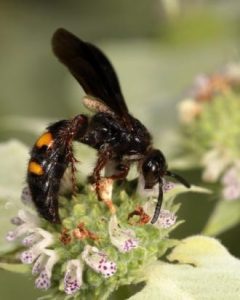
Noble Scoliid on Broadleaved Mountain-mint
In their quest for food (nectar and pollen) from flowers, insects unintentionally carry pollen from one flower to the next. For pollination to take place, the insect must be bringing pollen from the same flower species at a stage when the receiving flowers are receptive to pollen. It takes a huge number of insects to make this process work. It is helpful to plant more than one individual of the same species.
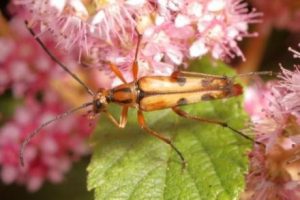
Strangalia famelica (a species of Flower Longhorn Beetle) taking nectar from Steeplebush (Spiraea tomentosa).
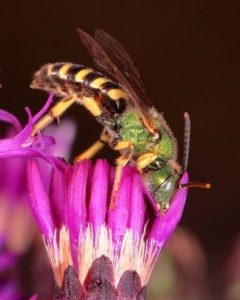
The Nettle family (Urticaceae) serves as host for Red Admiral caterpillars (adult pictured here). Note damage to these Nettle leaves left by Milbert's Tortoiseshell caterpillars.
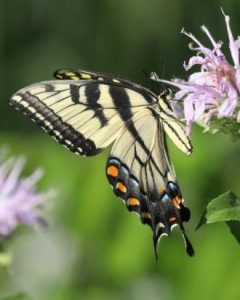
Eastern Tiger Swallow- tail taking nectar from Wild Bergamot (Monarda fistulosa).
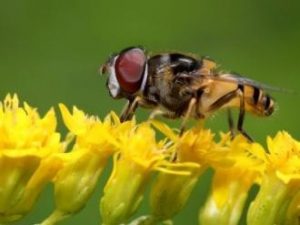
Hover Fly (Syrphidae) on Goldenrod (Solidago species).
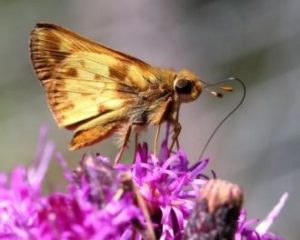
Zabulon Skipper sucking nectar of New York Ironweed through its long, curved, straw-like proboscis.
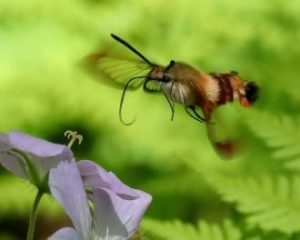
Hummingbird Moth extending its curved proboscis as it approaches a Wild Geranium (Geranium maculatum).
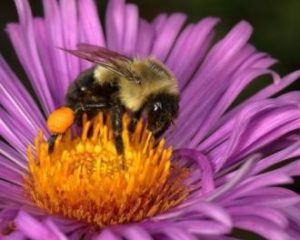
Common Eastern Bumblebee on New England Aster collecting pollen to feed its young. Note the orange, full pollen sac on its hind leg.
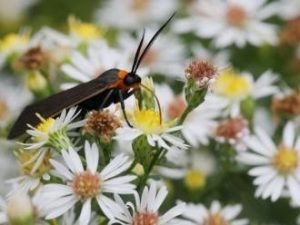
Zabulon Skipper sucking nectar of New York Ironweed through its long, curved, straw-like proboscis.
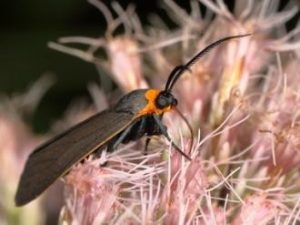
Yellow-collared Scape Moth on native Joe-Pye Weed (Eutrochium sp.).
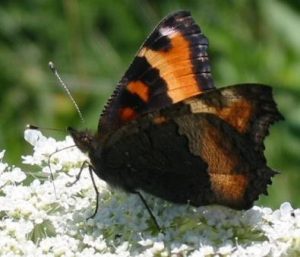
Milbert's Tortoiseshell adults are happy to drink nectar from the non-native Queen Anne's Lace (Daucus carota).
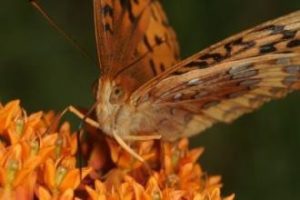
Great Spangled Fritillary nectaring on Butterfly Milkweed.